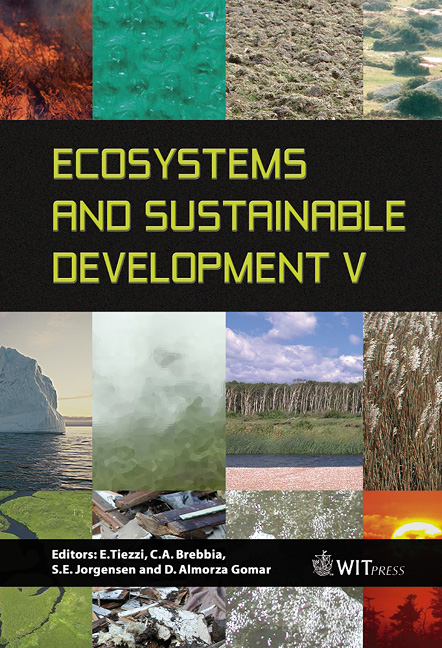Status Of The Barra Das Jangadas Estuary (North-eastern Brazil): An Ecological Approach
Price
Free (open access)
Transaction
Volume
81
Pages
11
Published
2005
Size
823 kb
Paper DOI
10.2495/ECO050701
Copyright
WIT Press
Author(s)
S. J. Macedo, S. Neumann-Leitão, M. L. Koening, M. Araújo Filho, R. Schwamborn, F. A. N. Feitosa, K. Muniz, S. R. Lacerda & M. J. Flores Montes
Abstract
The basic hydrological and planktonic characteristics of the Barra das Jangadas estuary were monitored to assess the water quality and the abiotic factors influencing the plankton populations. An intensive seven day sampling program was conducted at a fixed station, during the dry (January/2001) and the rainy (July/2001) seasons. Phytoplankton, zooplankton and the water physico-chemical parameters were sampled in different tides, totaling 56 sampling procedures during the 168-hours-program, in each season. The dissolved oxygen was under saturation at low tide in both seasons, indicating a polluted area; and saturated during high tide due to marine influence. High overall nutrient concentrations indicated an eutrophic environment. Chlorophyll-a was high (~25 mg.m -3 ). The marine eurihaline plankton dominated the area. Phytoplankton presented 266 species, however only six were abundant and frequent; density varied from 95.10 3 cel.L -1 to 7,830.10 3 both in the rainy season, and cyanobacterial blooms usually occurred in the estuary unbalancing the system. The zooplankton presented 87 taxa and varied from 1,300 to 18,500 ind.m -3 . The plankton diversity was low, mostly composed of r-strategists. The main pattern observed was marine eurihaline species in the dry season during high tide and limnetic species in the rainy season, low tide. During the neap tide in both seasons the water renovation was very poor, increasing the pollution load residence time. Keywords: estuary, water quality, nutrients, phytoplankton, zooplankton.
Keywords
estuary, water quality, nutrients, phytoplankton, zooplankton.





